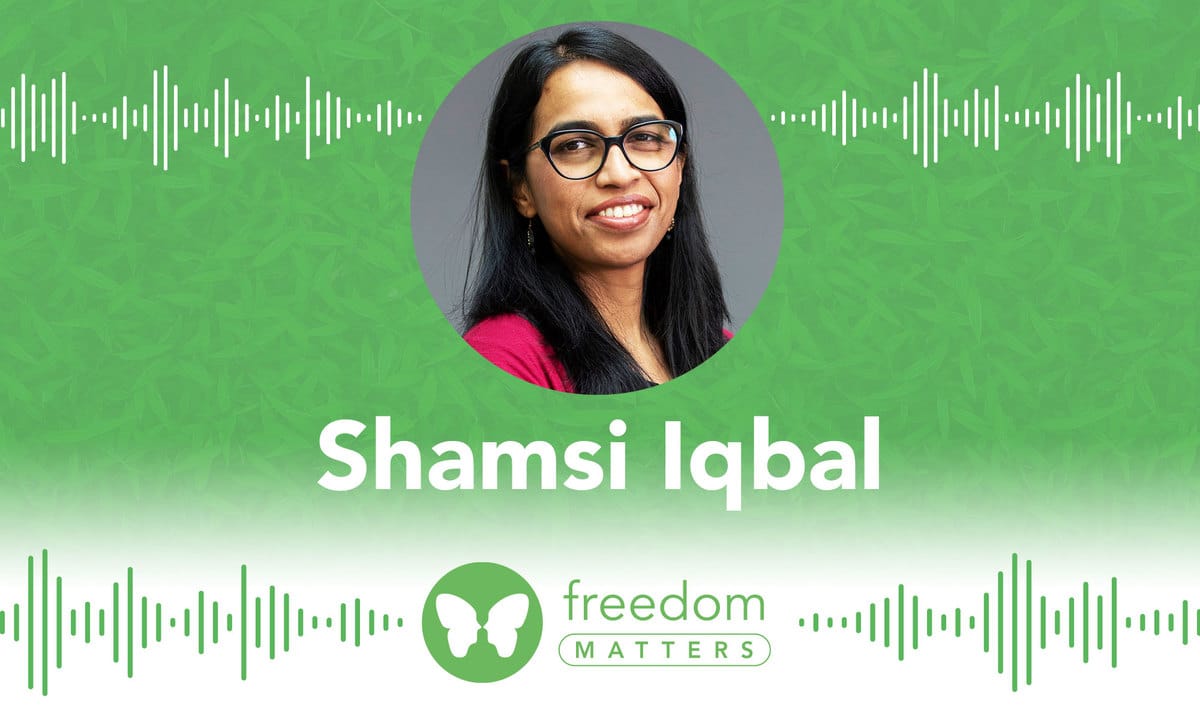How Freedom Focus Music Helps Keep You Productive

Music has long been a subject of debate in the world of work and study. Some can’t live without soothing classical sounds to help them think, while others need hard rock to keep them motivated all day long. There are those who prefer ambient noise, nature sounds, or binaural beats to get them into the zone. Then there are the ones who demand absolute silence, (good luck finding that in 2020!) or those who’ve discovered they actually need that annoying background office chatter to keep them focused.
Whether you’ve always been a die-hard headphones fan or the shift to working from home in pandemic conditions has changed your mind, it’s safe to say that in 2020 music and soundscapes can be incredibly helpful, and can play a crucial role in your home office setup.
This year we not only added new Focus Sounds, but we commissioned a series of music tracks that have been created specifically to help with focus and concentration. As a team of music lovers here at Freedom (with more than one pro performer amongst our ranks!), we were super excited about this project and wanted to share a little more of the thinking behind our new Focus Music tracks with you.
We called on our VP of Marketing Phil Amalong – an accomplished concert pianist, recording artist and producer, to break down the theory behind these soundscapes, which have been carefully composed to support your focus and productivity. Here’s his explanation of the musical “secrets” that induce these desired effects:
Timeline
The tracks are exactly 25 minutes in length so they match the length of a Pomodoro session. You can learn more about the popular Pomodoro technique here and then dive into super-powered sessions using these tracks. Of course, the music can also be used for focus and productivity without the Pomodoro technique.
Non-Distracting Elements
All the sounds and instruments in the tracks are contained within the parameters of reduced auditory salience. This simply means that there are no attention-grabbing sounds that would be disruptive to focus and a productive flow state.
The Productivity Arc
Over the first 20 minutes, the tracks subtly build in an arc-like fashion to evoke a constant flow of energy. This is accomplished by a very gradual thickening of musical texture (how many instruments and parts are playing at once) and a subtle increase in rhythmic complexity (how much musical “motion” or “activity” is occurring within musical time periods, known as phrases, measures, and beats.)

The Subtle Productivity Push
Aiding the constant energy flow, is the element of musical non-resolution. Here’s how it works.
Most Western music revolves around a tonic or musical “home base.” Sing the familiar scale “do-re-mi-fa-sol-la-ti-do” and listen to how “do” (the tonic pitch) feels like a resting place, whereas other tones in the scale have a relatively unstable position and want to move on. They have a type of musical gravity or pull…ultimately resolving to “do”.
This phenomenon of seeking the tonic also works within the chord or harmonic structure of music, but with far more complexity and nuance. Once the tonic of a piece of music is established to the ear, we subconsciously hear all harmonies in that piece of music relative to that tonic, each having a different relationship and amount of musical gravity toward the tonic, and often an associated feeling or “meaning”.
Because our subconscious perceives something unfinished and ongoing in the music, we have a sense that our task is not yet finished.
In the Freedom tracks, there is a subtle avoidance of a complete resolution to the tonic within the chord structures until the final minutes of the track.
The effect of this avoidance of resolution on the listener is a very slight “on your toes” feeling – one of subtle anticipation. Because our subconscious perceives something unfinished and ongoing in the music, we have a sense that our task is not yet finished.
This keeps our attention primed and aware of whatever activity or work we are doing, ultimately keeping us on track for the duration of the music until the tonic resolution is finally reached before the pomodoro break.
The Coda
In the last 3-5 minutes, the music winds down by reducing texture and rhythmic complexity as well as resolving in a more affirmative fashion on the tonic. This brings the listener’s energy levels back to a moderate plateau and prepares them for the 5 minute pomodoro break.
Find the Focus Music tracks on the Freedom Dashboard, in the Freedom iOS or Android app, on Soundcloud, and on our Youtube channel, and let us know how they work for you!


